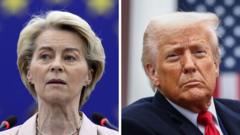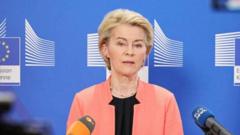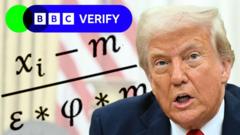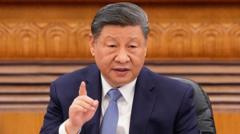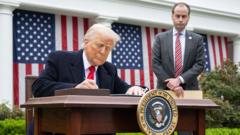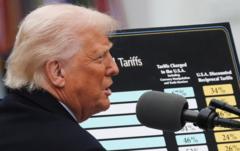In a surprising policy shift, President Trump announced new tariffs reaching up to 50% on goods from what he termed "worst offenders," aiming to protect American workers and revamp trade practices.
New Tariffs Announced: Trump Targets International Trade Practices
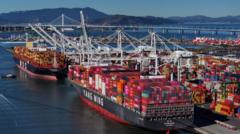
New Tariffs Announced: Trump Targets International Trade Practices
President Trump's significant tariff plan aims to reshape global trade dynamics by imposing steep import taxes.
President Donald Trump has made a bold move to reshape international trade by announcing a sweeping new tariff plan that could redefine the economic landscape. This initiative sets an initial baseline tariff of at least 10% on all imports, mirroring a proposal he advocated during his presidential campaign last year. Goods from countries labeled as "worst offenders," which notably include China and the European Union, will incur increased rates intended as retaliation for perceived unfair trade practices.
Deputy analysts suggest that this historic shift from America’s longstanding free trade policies could lead to elevated consumer prices domestically and slower economic growth both in the U.S. and globally. As per the announcement made in the White House Rose Garden, the baseline tariffs will be implemented on April 5th, while higher tariffs will take effect on April 9th. “We’re declaring economic independence,” Trump said, emphasizing the need to protect American interests in trade against nations that impose substantial tariffs on U.S. exports.
Highlighting a narrative of injustice, he claimed that for decades, the United States had been taken advantage of by various countries, which he accused of “looting” American resources. Trump expressed optimism that these tariffs would aid in bolstering local manufacturing and contribute to national prosperity. Over recent weeks, he had hinted at Wednesday's announcement, which follows previous tariff increases on imports from China, steel, aluminum, and certain goods from Canada and Mexico.
While the new tariffs will not affect trade with Mexico and Canada, other allies will face escalating charges. For instance, products from the UK will attract a 10% tariff, while the EU’s rate will be 20%. China will see tariffs soar by an additional 34% on top of existing levies, leading to a cumulative 54% tax on certain goods. Other notable targets include Japan and India, facing tariffs of 24% and 26%, respectively.
The newly proposed tariffs will apply to over 100 countries, with about 60 facing heightened rates that respond to currency devaluation and high Value Added Tax (VAT). Additional taxes will come into play from midnight on foreign-made cars, which are subject to a 25% tariff, and specific exemptions such as pharmaceuticals and copper are still under consideration for future tariffs.
Experts view this regulatory overhaul as a radical shift in the international trade order fostered by the U.S. since World War II. Professor Gustavo Flores-Macias describes it as a potential unraveling of a global trading framework. In a direct immediate response to the tariff announcement, major American companies such as Apple, Amazon, and Walmart saw their stock values plummet in after-market trading, reflecting investor concerns about the implications of higher import costs.

